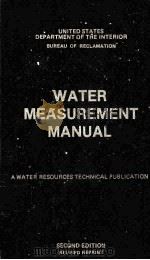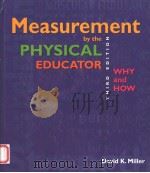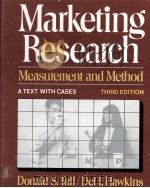《RHEOLOGICAL MEASUREMENT SECOND EDITION》
| 作者 | A.A.COLLYER AND D.W.CLEGG 编者 |
|---|---|
| 出版 | CHAPMAN & HALL |
| 参考页数 | 779 |
| 出版时间 | 1998(求助前请核对) 目录预览 |
| ISBN号 | 无 — 求助条款 |
| PDF编号 | 818032258(仅供预览,未存储实际文件) |
| 求助格式 | 扫描PDF(若分多册发行,每次仅能受理1册) |

Part One Small Strain Measurements1
1 Oscillatory rheometryG. Marin3
1.1 Linear viscoelastic functions in the frequency domain3
1.1.1 The complex shear modulus G(ω)5
1.1.2 The complex compliance J(ω)7
1.1.3 The complex viscosity η(ω)9
1.2 Test methods in oscillatory rheometry10
1.2.1 Controlled torque and controlled displacement11
1.2.2 Rheometers: orthogonal, balance and new designs16
1.2.3 Free oscillation rheometers23
1.2.4 Resonant methods26
1.2.5 Time domain mechanical spectroscopy26
1.2.6 Improvements in mechanical spectroscopic methods33
1.2.7 Sources of error35
1.3 Some important applications of oscillatory rheometry41
1.3.1 Molecular rheology42
1.3.2 Characterization of isothermal chemical reactions43
1.3.3 Thermomechanical analysis44
References45
2 Computer-aided methods in rheometryH. H. Winter, M. Mours, M. Baumgartel and P. R. Soskey47
2.1 Introduction47
2.2 Parameters in rheological models50
2.2.1 Stress-strain relations50
2.2.2 Steady shear viscosity54
2.2.3 Rheology of the material at equilibrium57
2.2.4 Finite viscoelasticity (non-equilibrium)61
2.3 Determination of rheological material parameters64
2.3.1 Rheometric experiments64
2.3.2 Temperature shift factors66
2.3.3 Relaxation modulus and relaxation time spectrum72
2.4 Model calculations with relaxation time spectra79
2.5 Rheometry on samples that undergo changes85
2.6 Conclusions92
Appendix: definition of strain and stress tensors93
Acknowledgement95
References95
3 Rheological studies using a vibrating probeR. A. Pethrick99
3.1 Introduction99
3.1.1 Application time, pot life and pour time101
3.1.2 Working life or working time101
3.1.3 Gel time102
3.1.4 Tack-free time, demould time102
3.1.5 Cure time102
3.2 Quality control methods103
3.2.1 Definition of the curing process103
3.2.2 Methods available for cure monitoring107
3.3 Vibrating needle curemeter (VNC)108
3.3.1 Amplitude attenuation for the VNC108
3.3.2 Output voltage and viscosity111
3.3.3 Monitoring viscous changes with the VNC113
3.3.4 Recognizing gelation characteristics with the VNC115
3.4 Strathclyde curemeter121
3.4.1 Calibration of the Strathclyde curemeter125
3.4.2 Thermally scanning curemeter126
3.4.3 Cure of an epoxy resin system128
3.4.4 Cure of powder resin systems130
3.4.5 Plastisol systems131
3.4.6 Other applications133
3.5 Conclusions134
Acknowledgements135
References135
4 Dynamic mechanical analysis using complex waveformsB. I. Nelson and J. M. Dealy138
4.1 Introduction138
4.2 Frequency analysis of complex waveforms139
4.2.1 Time domain mechanical spectroscopy142
4.3 Properties of the discrete Fourier transform144
4.3.1 Aliasing146
4.3.2 Time and frequency domain scaling147
4.3.3 Leakage148
4.3.4 Alternating versus simultaneous data acquisition150
4.4 Some waveforms of special interest151
4.4.1 Multiple sine waves151
4.4.2 Equistrain waveforms152
4.4.3 Pulse-like strains153
4.4.4 PRBS waveforms155
4.5 A sample DMA experiment157
4.6 Conclusions163
References164
Part Two Large Strain Measurements165
5 Capillary rheometryM. R. Mackley and R. P. G. Rutgers167
5.1 Introduction167
5.2 Physical aspects168
5.3 Level 1: viscometric capillary flow for simple constitutive equations172
5.3.1 Creeping flow solution for a Newtonian fluid172
5.3.2 Creeping flow solution for a power law fluid174
5.3.3 Creeping flow solution for a Bingham plastic fluid174
5.3.4 Apparent viscosity175
5.3.5 Entry flow corrections176
5.4 Level 2: numerical simulation of capillary flow178
5.4.1 Numerical simulation of Newtonian capillary flow178
5.4.2 Numerical simulation of power law capillary flow180
5.5 Level 3: modelling of complex rheological behaviour180
5.5.1 Viscoelastic constitutive equations181
5.5.2 Numerical simulation of viscoelastic flow182
5.6 Multipass rheometry185
5.7 Conclusions187
References188
6 Slit rheometryChang Dae Han190
6.1 Introduction190
6.2 Theory191
6.3 Method193
6.4 Discussion194
6.4.1 Correlations of Vexit and N1 with??194
6.4.2 Extent of flow disturbance near the die exit201
6.4.3 Extent of viscous shear heating205
6.5 Concluding remarks206
Notation208
References209
7 Viscous heatingR. C. Warren210
7.1 Effect of pressure on viscosity210
7.2 Equations of flow in capillaries211
7.3 Dimensionless numbers for non-isothermal flow213
7.4 Non-dimensional equations of flow215
7.5 Solution methods for the equations of flow215
7.5.1 Analytical methods215
7.5.2 Empirical methods216
7.5.3 Numerical methods217
7.6 Thermal boundary conditions at the die walls219
7.6.1 Adiabatic walls219
7.6.2 Isothermal walls219
7.6.3 Constant heat transfer coefficient at the die walls219
7.6.4 Effects of different thermal boundary conditions221
7.7 Fluid compressibility and expansion cooling224
7.8 Temperature rise due to viscous heating226
7.9 Temperature rises: theory versus experiment227
7.10 Effects of viscous heating on die swell229
7.10.1 Inelastic fluids230
7.10.2 Elastic fluids231
7.11 Concluding remarks233
Notation234
References235
8 Sliding plate and sliding cylinder rheometersJ. M. Dealy and A. J. Giacomin237
8.1 Introduction237
8.1.1 Limitations of pressure flow and rotational rheometers237
8.2 Sliding plate rheometers239
8.2.1 Basic features239
8.2.2 Basic equations240
8.2.3 Sources of error240
8.2.4 Use of shear stress transducers247
8.2.5 Applications249
8.2.6 High shear rate techniques252
8.3 Sliding cylinder rheometers253
8.3.1 Introduction253
8.3.2 Basic equations253
8.3.3 Applications255
References255
9 Rotational viscometryR. L. Powell260
9.1 Introduction260
9.2 Conventional viscometers262
9.2.1 Cone and plate262
9.2.2 Parallel plates268
9.2.3 Concentric cylinders272
9.3 Sources of error277
9.3.1 Fluid inertia277
9.3.2 Flow geometry278
9.3.3 Viscous heating282
9.3.4 Sample instability283
9.3.5 Material effects284
9.3.6 Wall slip286
9.3.7 Experimental effects287
9.4 Novel rheometric flows288
9.4.1 Alternative cone and plate geometries288
9.4.2 Vane rheometer290
9.4.3 Helical screw rheometer292
Notation293
References296
10 Normal stress differences from hole pressure measurementsA. S. Lodge299
10.1 Summary299
10.2 Online measurements: high viscosity liquids299
10.3 Sample measurements: low viscosity liquids at high shear rates309
10.4 Circular holes317
10.5 Viscous heating318
Notation324
Acknowledgements324
References324
11 Using large-amplitude oscillatory shearA. J. Giacomin and J. M. Dealy327
11.1 Introduction327
11.1.1 Simple shear327
11.1.2 Oscillatory shear328
11.1.3 Linear viscoelasticity328
11.1.4 Non-linear viscoelasticity330
11.1.5 Normal stress differences330
11.2 Experimental errors331
11.2.1 Fluid inertia331
11.2.2 Viscous heating333
11.2.3 Secondary flows333
11.3 Measurement techniques334
11.4 Methods of data analysis337
11.4.1 Spectral analysis337
11.4.2 Error analysis339
11.4.3 Response loops341
11.4.4 Analogue methods342
11.4.5 Time-domain analysis343
11.4.6 Approximate methods343
11.5 Plausible phase angles344
11.6 The Pipkin diagram344
11.7 Slip345
11.8 Limiting cases346
11.9 Interpreting non-linear behaviour347
11.10 Molecular origins351
Acknowledgements352
References353
12 Rate- or stress-controlled rheometryW. GleijBle357
12.1 Introduction357
12.1.1 Contemporary examples of applied rheometry357
12.2 The problem359
12.3 Rate-controlled measurements360
12.4 Stress-controlled measurements363
12.5 Viscous and viscoelastic similarity366
12.6 Viscoelastic similarity and Bagley correction367
12.7 Experiments372
12.8 Conclusions377
12.9 Stress-controlled simultaneous measurement of viscosity and flow exponent378
12.9.1 Measurement technique379
12.9.2 Flow exponent and molecular weight distribution382
12.9.3 Experimental design and results383
12.9.4 Evaluation of flow data388
12.9.5 Conclusion390
References390
13 Transient rheometryK. F. Wissbrun392
13.1 Introduction392
13.2 Transient test types and theoretical equations393
13.2.1 Constitutive equations394
13.2.2 Stress relaxation after imposition of step strain396
13.2.3 Creep after imposition of step stress397
13.2.4 Stress during start-up and after cessation of steady shear flow399
13.2.5 Elastic recoil (elastic or strain recovery)402
13.2.6 Multiple step strain tests404
13.2.7 Multiple shear rate step tests406
13.2.8 Continuously varied shear rate tests408
13.2.9 Superimposed dynamic tests410
13.3 Analysis of viscoelastic transient test data410
13.3.1 Determination of relaxation spectra410
13.3.2 Empirical approximate relations413
13.4 Experimental considerations415
13.4.1 Apparatus415
13.4.2 Sources of error415
13.4.3 Instrument response time and sample inertia416
13.4.4 Apparatus compliance419
13.4.5 Other sources of error and unusual phenomena421
References423
14 Commercial rotational rheometersG. J. Brownsey427
14.1 Introduction427
14.2 Commercial rheometers431
14.2.1 Bohlin Instruments431
14.2.2 Brookfield Viscometers434
14.2.3 FANN436
14.2.4 Haake436
14.2.5 Kaltec Scientific440
14.2.6 Physica441
14.2.7 Reologica444
14.2.8 Rheometric Scientific446
14.2.9 TA Instruments449
14.3 Conclusion450
14.4 Useful addresses451
Part Three Extensional and Mixed Flows453
15 Converging diesA. G. Gibson453
15.1 Introduction455
15.2 Behaviour of polymer melts, solutions and fibre suspensions458
15.2.1 Implications of fluid anisotropy459
15.2.2 Extensional behaviour of fibre suspensions462
15.3 Capillary flow experiments465
15.4 Treatment of capillary flow data467
15.5 Conical die flow472
15.5.1 Flow in convergences of shallow angle472
15.5.2 A convergent die model using spherical coordinates477
15.6 Power law equations for a wide range of die angles482
15.7 Design of injection mould gating485
15.8 Freely convergent flow: recirculation zones487
15.9 Conclusions488
Notation489
References490
16 Recoverable elastic strain and swelling ratioR. I. Tanner492
16.1 Definition of recoverable elastic strain and swelling ratio492
16.2 Elastic theory of swelling494
16.3 Inelastic theory of swelling497
16.4 Computation of swelling for various rheological models498
16.4.1 Steady shear behaviour500
16.4.2 Steady elongational behaviour503
16.4.3 Results for the planar swelling problem504
16.5 Relation of rheology to swelling511
16.6 Conclusion and further investigations513
Notation513
References514
17 Elongational rheometersR. K. Gupta and T. Sridhar516
17.1 Introduction516
17.2 Extensional flow kinematics518
17.2.1 Tensile viscosity518
17.3 Homogeneous stretching of polymer melts519
17.3.1 Constant stretch rate experiments520
17.3.2 Constant-stress experiments521
17.3.3 Constant sample length experiments523
17.3.4 Experimental results525
17.4 Non-uniform stretching of polymer melts528
17.4.1 Melt spinning of fibres529
17.4.2 Converging flows531
17.4.3 Miscellaneous methods532
17.5 Homogeneous stretching of polymer solutions533
17.5.1 Constant stretch rate experiments534
17.5.2 Experimental results536
17.6 Non-uniform stretching of polymer solutions538
17.6.1 Solution spinning of fibres538
17.6.2 The opposed nozzle rheometer542
17.6.3 Miscellaneous techniques544
17.7 Conclusions545
References545
18 Squeeze flowA. G. Gibson, G. Kotsikos, J. H. Bland and S. Toll550
18.1 Introduction550
18.2 Theoretical treatment of squeeze flow552
18.2.1 Constant area squeeze flow552
18.2.2 Constant volume squeeze flow554
18.3 Squeeze flow of polymer melts555
18.3.1 Literature review555
18.3.2 Normal stresses and elastic effects in squeeze flow557
18.3.3 Experimental results559
18.4 Modelling squeeze flow of planar fibre suspensions563
18.4.1 Transversely isotropic power law model565
18.4.2 Limiting cases566
18.4.3 Variational approach566
18.4.4 Micromechanical approach570
18.4.5 Non-local constitutive equation573
18.4.6 Special cases: locality574
18.4.7 Squeeze flow with continuous tows575
18.5 Planar fibre suspension squeeze flow models579
18.6 Experimental squeeze flow of planar fibre suspensions581
18.6.1 Glass mat thermoplastics582
18.6.2 Sheet moulding compounds586
18.7 Conclusions and recommendations for further work589
Notation590
References591
Part Four Specialized Rheometers593
19 Flow visualization in rheometryM. E. Mackay and D. V. Boger595
19.1 Introduction595
19.2 Birefringence measurements597
19.2.1 Stress-optic relation598
19.2.2 Measurement of birefringence599
19.2.3 Experimental studies using various geometries602
19.3 Streak-line observation and point velocity measurement616
19.3.1 Measurement techniques616
19.3.2 Tubular entry flows of viscoelastic fluids623
19.4 Conclusion629
Acknowledgements630
References630
20 Rheological measurements on small samplesM. E. Mackay635
20.1 Introduction635
20.2 Miniature torsional rheometers636
20.2.1 Cone and plate636
20.2.2 Parallel plates644
20.2.3 Concentric cylinders647
20.3 Falling ball rheometer650
20.4 Capillary rheometer653
20.5 Surface forces rheometer655
20.6 Prong rheometer658
20.7 Other rheorheters662
20.8 Concluding remarks663
Acknowledgements664
References664
21 Rheometry for process controlT. O. Broadhead and J. M. Dealy666
21.1 An overview of rheometry in manufacturing666
21.1.1 The value of rheological information666
21.1.2 Basic elements of a rheological measurement667
21.1.3 Rheological sensors for process control667
21.1.4 Instrument classification by method of installation669
21.2 Rheological behaviour and its measurement670
21.2.1 A survey of rheological behaviour670
21.2.2 Test requirements for various fluids674
21.2.3 Requirements for high pressure operation677
21.3 Capillary and other pressure flow rheometers677
21.3.1 Correlations with pressure drop sensors678
21.3.2 Capillary viscometers678
21.3.3 Slit rheometers684
21.4 Rotational process rheometers686
21.4.1 Common issues686
21.4.2 Concentric cylinder rheometers688
21.4.3 Parallel disc rheometers692
21.4.4 Cone and plate rheometers693
21.4.5 Rheometers based on lubrication flow694
21.5 Helical flow rheometers695
21.6 Piston-cup viscometers696
21.7 Vibrational rheometers697
21.8 Other rheometers699
21.9 Signal processing699
21.9.1 Calibration699
21.9.2 Temperature compensation700
21.9.3 Signal noise and filtering702
21.9.4 Sampling delay703
21.9.5 Process control using rheological sensors704
21.10 Selecting a process rheometer705
21.10.1 Nature of the material being processed705
21.10.2 Process conditions707
21.11 A final word708
Appendix: manufacturers of commercial instruments708
References720
22 Interfacial rheologyB. Warburton723
22.1 Introduction and history723
22.2 Definitions and theory725
22.3 Interfacial stress725
22.4 Interfacial strain726
22.5 Interfacial strain rate727
22.6 Interfacial elastic moduli727
22.7 Interfacial dilatational techniques728
22.7.1 Theory of dilatational interfacial rheology728
22.8 Interfacial shear rheology730
22.8.1 Continuous rotation730
22.8.2 Stationary and non-stationary interfacial films732
22.8.3 Interfacial shear under constant stress733
22.8.4 Interfacial shear oscillation734
22.8.5 Interfacial rheology on non-stationary interfacial films737
22.8.6 Solid films743
22.9 Immunological processes: cascade kinetics748
22.10 Summary and conclusions749
22.11 Names and addresses of instrument manufacturers749
Acknowledgements752
References752
Index755
1998《RHEOLOGICAL MEASUREMENT SECOND EDITION》由于是年代较久的资料都绝版了,几乎不可能购买到实物。如果大家为了学习确实需要,可向博主求助其电子版PDF文件(由A.A.COLLYER AND D.W.CLEGG 1998 CHAPMAN & HALL 出版的版本) 。对合法合规的求助,我会当即受理并将下载地址发送给你。
高度相关资料
-
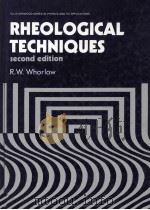
- RHEOLOGICAL TECHNIQUES SECOND EDITION
- 1992 ELLIS HORWOOD LIMITED
-
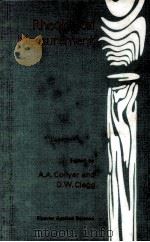
- RHEOLOGICAL MEASUREMENT
- 1988 ELSEVIER APPLIED SCIENCE PUBLISHERS LTD
-

- TECHNIQUES IN RHEOLOGICAL MEASUREMENT
- 1993 CHAPMAN & HALL
-

- RHEOLOGICAL PHENOMENA IN FOCUS
- 1993 ELSEVIER
-

- MEASUREMENT BY THE PHYSICAL EDUCATOR WHY AND HOW SECOND EDITION
- 1994 Brown & Benchmark Publishers
-
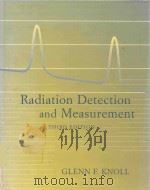
- Radiation Detection and Measurement THIRD EDITION
- 1999 John WILEY & Sons Inc
-

- ENCINEERING PROPERTIES OF SOILS AND THEIR MEASUREMENT SECOND EDITION
- 1978 MCGRAW-HILL INTERNATIONAL BOOK COMPANY
-
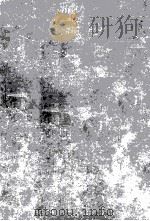
- PATHOLOGY OF THE HEART SECOND EDITION SECOND EDITION
- 1960 CHARLES C THOMAS
-
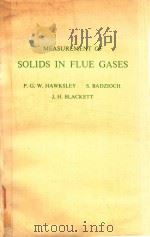
- MEASUREMENT OF SOLIDS IN FLUE GASES SECOND EDITION 1977
- 1977 THE INSTITUTE OF FUEL
-

- MEASUREMENT AND SYNTHESIS IN THE CHEMISTRY LABORATORY SECOND EDITION
- 1998 PRENTICE HALL
-
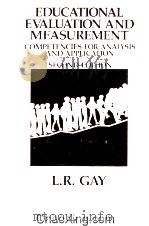
- EDUCATIONAL EVALUATION AND MEASUREMENT COMPETENCIES FOR ANALYSIS AND APPLICATION SECOND EDITION
- 1985 CHARLES E.MERRILL PUBLISHING COMPANY
提示:百度云已更名为百度网盘(百度盘),天翼云盘、微盘下载地址……暂未提供。➥ PDF文字可复制化或转WORD
